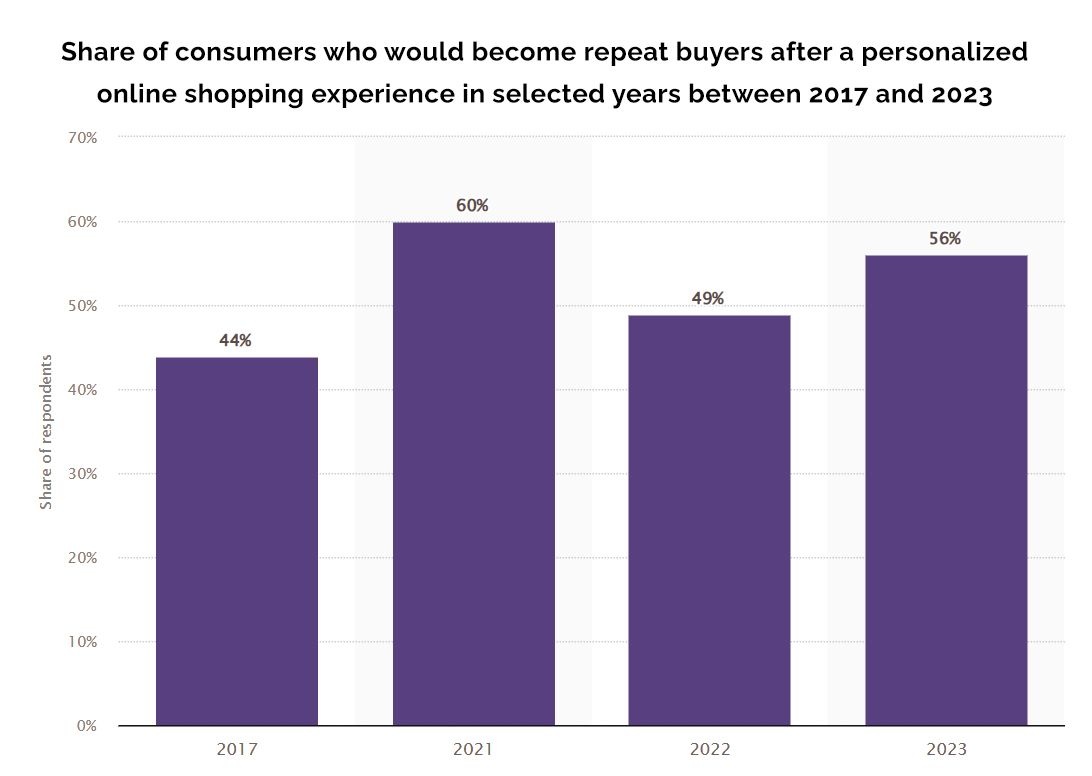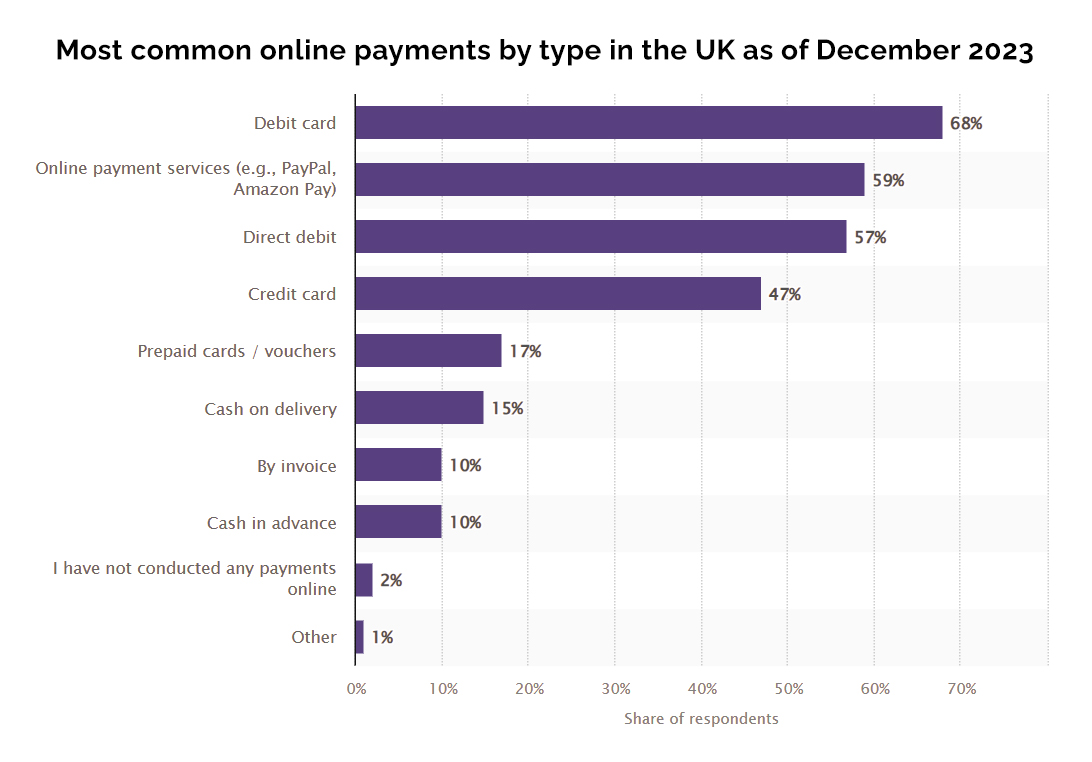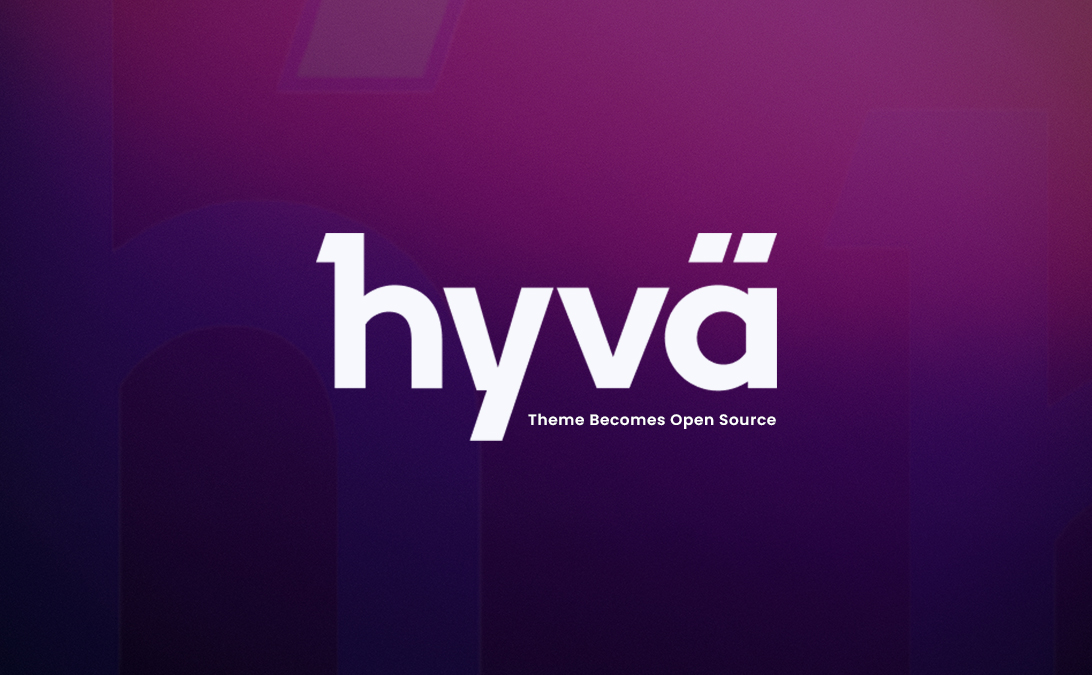
Staying Ahead of the Curve with Emerging eCommerce Trends 2024
9 May 2024
With such fierce competition in the eCommerce industry, being aware of the latest technology trends and updates is crucial. This helps eCommerce businesses to stay relevant to emerging consumer demands in online shopping and ensures that the customer experience is always enjoyable, efficient and persuasive.
Various technologies, such as machine learning, AR, and headless commerce, are leading the eCommerce trends in 2024. Most of these are focused on fulfilling customer expectations, ensuring customer data privacy, and smooth store management for online retailers. An established app and web development agency can help you assess and ultimately integrate these trends into your eCommerce platform.
Here are 7 eCommerce Trends in 2024
1. The Rise of Hybrid Commerce
Industry experts view Hybrid Commerce as the future of eCommerce, which is a blend of online channels and brick and mortar stores. Hybrid Commerce, or omnichannel selling, involves integrating multiple channels and platforms, which further boosts physical and e-commerce sales and conversion rates across the business.
One approach, called ‘Buy Online and Pick up In-Store’ (BOPIS), is simple and can be more convenient and cheaper for customers to use. It allows shoppers to check out products on their mobile devices or desktops, pay online and then collect their purchases from an established physical store or pickup location. Global brands like Walmart, Target, and IKEA offer this service.
Another strategy is referred to as ROPO (Research Online and Purchase Offline). It eliminates the shipping fee and allows customers to make well-informed decisions about their purchases. This is because customers can see, touch, and feel their products before buying. This approach helps eCommerce businesses gain customer loyalty in a smart way.
2. Artificial Intelligence Integration
Using AI in eCommerce web pages allows business store merchants a wide range of possibilities. For example, AI-powered online stores can be trained to adapt to online shopping behaviour. AI can also help you build a powerful search engine that identifies exactly what the customer is looking for, even with vague inputs.
AI and machine learning are also helpful in providing a personalised customer experience to shoppers. Recent research shows that 56% of participants who shop online are more likely to buy again from a retailer that provides a tailored service that understands their specific needs and requirements.
The infographic below provides valuable insights into the eCommerce landscape and how much online shoppers value personalisation.

One of the leading beverage companies, Starbucks, leverages Artificial Intelligence and Machine Learning to provide customers with out-of-the-box personalisation.
3. Augmented and Virtual Reality
Augmented Reality (AR) seamlessly integrates the physical world with the online virtual world using computer-generated visuals. Similarly, VR provides a simulated experience that places the user in a computer-generated environment via VR headsets.
AR and VR are disruptive technologies leading the 2024 eCommerce trends. The eCommerce market is projected to witness over 25% Compound Annual Growth Rate from 2021 to 2026. As more companies continue to adopt these technologies, we are witnessing an increased demand to provide an immersive customer experience on websites and apps.
One of the global brands leveraging AR is Sephora. Currently, their augmented reality feature allows customers to upload selfies and virtually try on various products. The company plans to launch a new update that lets customers view themselves moving in real-time with digital makeup. This will further enhance customer satisfaction with personalized customer service.
4. Social Commerce
When assessing the eCommerce trends in 2024, you cannot ignore social media platforms, often serving as the ideal sales channel particularly via anytime, anywhere, always on mobile devices. Social Commerce revenue stood at 571 billion U.S. dollars in 2023. The CAGR (Compound Annual Growth Rate) of Social Commerce is estimated to be 13.7 percent from 2023 to 2028.
Social Commerce helps you launch products and brands and reach new customers efficiently. Various built-in eCommerce platforms on social media, such as TikTok Shop, Instagram Shopping, Facebook Shops, and others, make it convenient for online store merchants to launch successful campaigns and build awareness and sales quickly.
Using social commerce is a proven strategy that most eCommerce companies can test and learn from easily. The often cost-effective strategy also provides scope for integrating influencer marketing and live shopping to boost eCommerce sales.
5. Headless Commerce
Headless Commerce refers to eCommerce platforms and solutions with strongly decoupled frontends and backends. This website architecture uses application programming interfaces (APIs) to deliver content to the frontend framework.
It lays the foundation for smooth integration with various third-party services, IoT devices, mobile applications, and other emerging technologies. Consequently, online store merchants can sell products on devices such as laptops, smartphones, smart speakers, and more.
This approach helps to build a unified shopping experience with greater flexibility and possibilities. Adopting a headless architecture like Magento Commerce for your online store can help you establish an omnichannel presence. A Magento development company can build a future proof eCommerce platform like Magento to deliver your eCommerce growth aspirations and a superior online customer experience.
6. Multiple Payment Options
One of the most important eCommerce trends is the availability of various payment options for driving conversions. Losing potential buyers due to a lack of a flexible and secure payment system can mean failure for any online or mobile commerce brand.
In recent years, the use of digital wallets has risen. Integrating standard payment options like cards, wallets, etc., in your web designs can help you achieve an optimum conversion rate and an immediate growth in online purchases.
The graph below highlights the most common online payments by type.

7. Marketing Automation
Various routine marketing tasks, such as running ads, outreach, and follow-up emails, can be automated with the help of machine learning-based marketing automation solutions. This technology allows you to launch personalised marketing campaigns based on customer data such as online shopping behaviour.
This helps boost customer engagement and enhance conversion rates. Marketing automation is one of the key eCommerce trends of 2024, focusing on streamlining daily operations and management-based tasks. Studies show that it helps business owners save up to 6 hours a week.
With the right marketing automation algorithms, for example, companies can successfully reduce the cart abandonment rate via automated emails as push notifications. The benefits of eCommerce automation include smooth order processing, wider audience reach, quicker deliveries, and more.
eCommerce Trends 2024 – Conclusion
Before you decide which of the latest eCommerce trends to implement in 2024, it is essential to carefully draft a strategy that reflects comprehensive research on the customer journey. You must determine whether a chosen trend will work optimally in your favour and help you enhance customer experience.
At chilliapple, an established eCommerce agency in the UK, we can help you identify and implement the best technology trends of the year to keep you ahead in the digital race.




